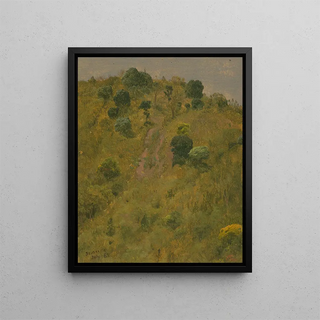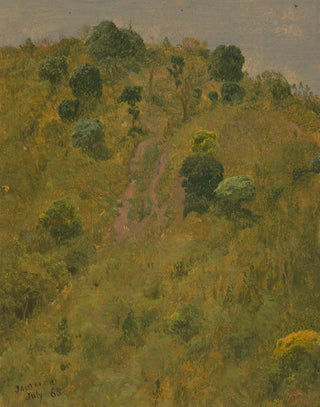Art print | Landscape V - Frederic Edwin Church


View from behind

Frame (optional)
In the rich and captivating universe of 19th-century American art, the "L" of Frederic Edwin Church stands out for its ability to capture the majesty and grandeur of natural landscapes. This canvas, emblematic of the Hudson River School movement, transports the viewer to the heart of wild and sublime nature, where light and color dance harmoniously. Through this artwork, Church invites us to explore infinite horizons, to feel wonder at the beauty of the world, while awakening a deep reflection on our place within this magnificent nature.
Style and uniqueness of the work
"The L" is characterized by a refined pictorial technique, where the artist masters the use of light and shadows to create an immersive atmosphere. The meticulous details of natural elements, from majestic trees to radiant skies, testify to a striking realism that transcends mere visual rendering. Church excels in representing nuances of color, especially in the treatment of cloudy skies that take on golden hues at dusk. This artwork is not just a depiction of a landscape, but a sensory experience that evokes intense emotions, ranging from serenity to wonder. Every brushstroke seems to tell a story, that of a living and vibrant nature, inviting contemplation.
The artist and his influence
Frederic Edwin Church, an emblematic figure of the American Romantic movement, established himself as a master of landscape. A student of Thomas Cole, he developed a unique style that combines a deep respect for nature with a personal vision of the world. Church was not merely a painter, but a true explorer, traveling across the Americas and beyond to capture exotic and spectacular landscapes. His work had a major influence on his contemporaries and paved the way for a new appreciation of nature in art. Through his travels and studies, he was able to incorporate elements from various cultures, thus enriching his art with a universal dimension. His ability to evoke deep emotions through nature has inspired many artists, making him an essential figure in art history.
A wall decoration

Matte finish

View from behind

Frame (optional)
In the rich and captivating universe of 19th-century American art, the "L" of Frederic Edwin Church stands out for its ability to capture the majesty and grandeur of natural landscapes. This canvas, emblematic of the Hudson River School movement, transports the viewer to the heart of wild and sublime nature, where light and color dance harmoniously. Through this artwork, Church invites us to explore infinite horizons, to feel wonder at the beauty of the world, while awakening a deep reflection on our place within this magnificent nature.
Style and uniqueness of the work
"The L" is characterized by a refined pictorial technique, where the artist masters the use of light and shadows to create an immersive atmosphere. The meticulous details of natural elements, from majestic trees to radiant skies, testify to a striking realism that transcends mere visual rendering. Church excels in representing nuances of color, especially in the treatment of cloudy skies that take on golden hues at dusk. This artwork is not just a depiction of a landscape, but a sensory experience that evokes intense emotions, ranging from serenity to wonder. Every brushstroke seems to tell a story, that of a living and vibrant nature, inviting contemplation.
The artist and his influence
Frederic Edwin Church, an emblematic figure of the American Romantic movement, established himself as a master of landscape. A student of Thomas Cole, he developed a unique style that combines a deep respect for nature with a personal vision of the world. Church was not merely a painter, but a true explorer, traveling across the Americas and beyond to capture exotic and spectacular landscapes. His work had a major influence on his contemporaries and paved the way for a new appreciation of nature in art. Through his travels and studies, he was able to incorporate elements from various cultures, thus enriching his art with a universal dimension. His ability to evoke deep emotions through nature has inspired many artists, making him an essential figure in art history.
A wall decoration






